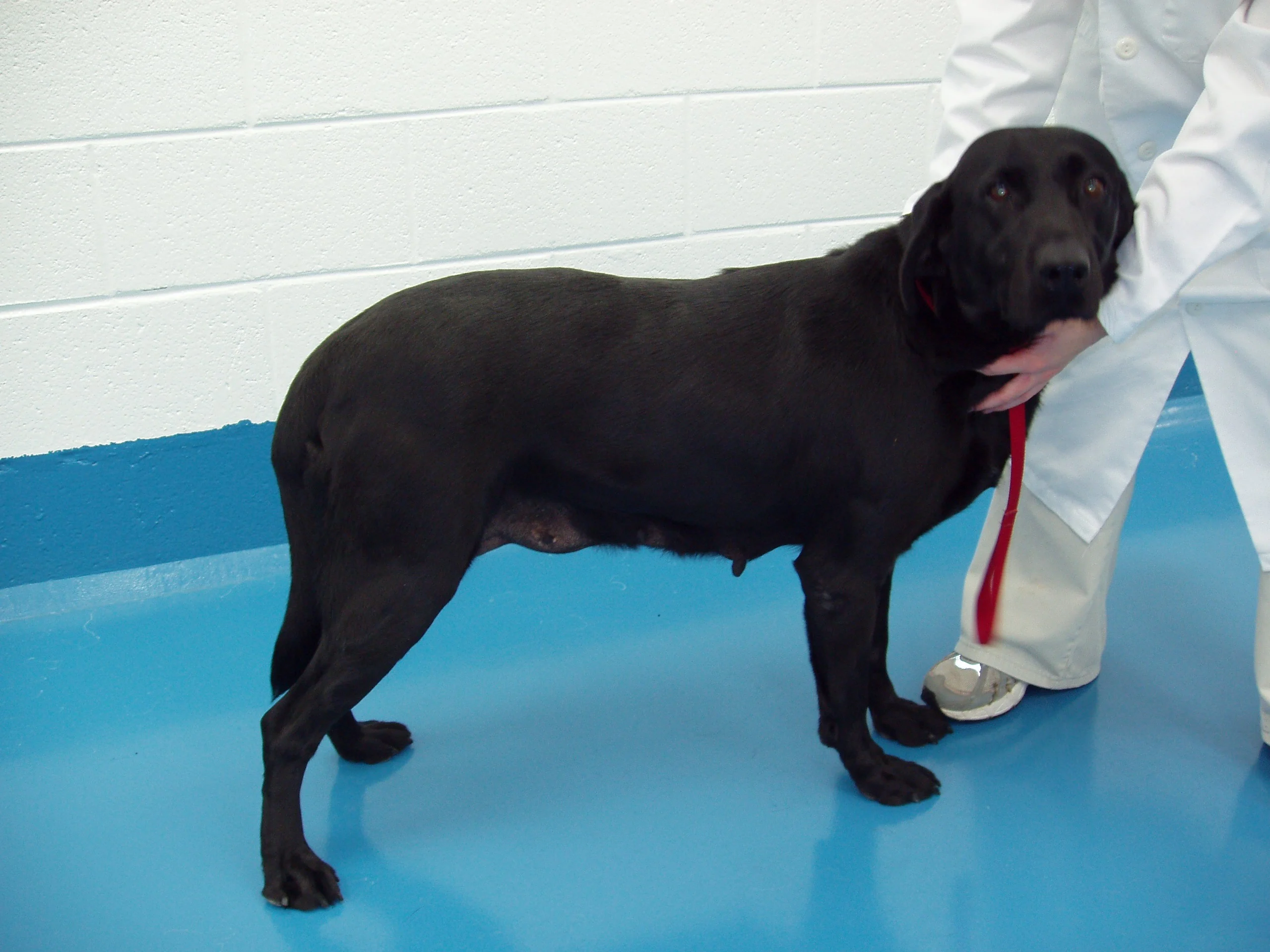Chronic Osteoarthritis

A 3-year-old, 28-kg, spayed female mixed-breed dog with a body condition score of 4/5 was presented for exercise intolerance.
History
The dog had been adopted a few months previously; the owner had the intention of running with the dog 3 days a week. Despite attempts at slow acclimation to increasing exercise, the dog became increasingly "lazy" instead. The owner did not observe any labored breathing, lameness in any limbs, or reluctance to climb stairs.
Physical Examination
No abnormalities were noted. No lameness could be identified subjectively. Extension of the hips elicited mild discomfort. Radiographs revealed severe bilateral coxofemoral OA. Medical management for OA was initiated. A weight reduction program with a calorie-restricted diet was instituted with the goal of reducing the patient's weight to a 2.5 to 3 BCS. The owner was instructed to allow the dog to exercise with low-impact activity (ie, walking, swimming) and to avoid high-impact exercise (ie, running or playing). Preliminary blood analysis was performed to rule out renal disease, dehydration, and other conditions in which NSAIDs are contraindicated. A 2-week course of an oral NSAID at the recommended dose was instituted to observe the maximal improvement possible with NSAID therapy and to monitor for any adverse side effects in this patient. The NSAID was then titrated to the lowest dose that controlled the chronic pain. The client was instructed to increase the dose for episodes of acute pain. Once the dog reached the correct BCS, the plan was to initiate a high N-3, low N-6 fatty acid commercially available diet.
Ask Yourself...
Nutritional Concerns
Weight loss is the primary nutritional component to managing OA; it is imperative in keeping arthritic patients active in an effort to maintain good muscle tone and strength, good joint range of motion, and connective tissue strength. Physical therapy also plays a significant role in achieving these goals. The recent release of veterinary foods labeled for palliation of OA, which include increased levels of N-3 fatty acids, may further benefit affected dogs. Once a slender body type has been reached; then a diet with a controlled fatty acid ratio may yield added comfort to the patient.

Top view of patient. Note lack of good “waist” caudal to the ribs.

VD pelvic projection. Note flattening of femoral heads in both coxofemoral joints, shallowing of acetabulae, and periarticular osteophytes on femoral necks and cranial rim of the acetabulae.
NSAIDs
NSAIDs have long been a treatment mainstay for OA and can be very effective in relieving pain. However, they can be associated with potentially serious adverse events. Gastrointestinal, hepatic, and renal side effects have been well documented, and individual patients may be sensitive to a single drug regardless of COX enzyme selectivity, which further complicates the issue. Veterinarians should take precaution with the use of NSAIDs in young and geriatric patients and those with gastrointestinal, hepatic, and renal disease. Concurrent use of multiple NSAIDs or of NSAIDs with corticosteroids must be avoided.
Other Medical Therapies
Despite the dramatic effects of NSAIDs early in the course of disease, OA may progress to the extent that these drugs alone no longer provide adequate relief. In such cases, multimodal medical therapies can be added in the hopes of improving results. NMDA receptor antagonists, such as amantadine, have shown some clinical success. Opioid agonists can be added with synergistic effects. Tramadol, a synthetic opioid, has recently become popular, both combined with NSAIDs as well as alone.
Nutraceutical products-including glucosamine, chondrotin sulfate, Perna canaliculus (the New Zealand green-lipped mussel), and MSN-may have some benefit in the treatment of OA and are associated with a very low risk of adverse effects. They may also be safely added to a therapeutic regimen in the hopes of providing as much comfort to the patient as possible.
Although OA is a common source of discomfort for many pets of all ages, it is manageable. With a multimodal approach and continuous monitoring, dramatic and lasting results can be seen.
Take-Home Messages
• Clinical signs of OA can differ greatly from severity indicated by radiographs.
• Treatment regimens-both medical and surgical-need to be tailor-made for each patient based on assessment of comfort level, lifestyle, and quality of life as well as client factors.
• There is no cure for OA; however, treatment can, almost without exception, bring significant comfort when a variety of concurrent measures is used.